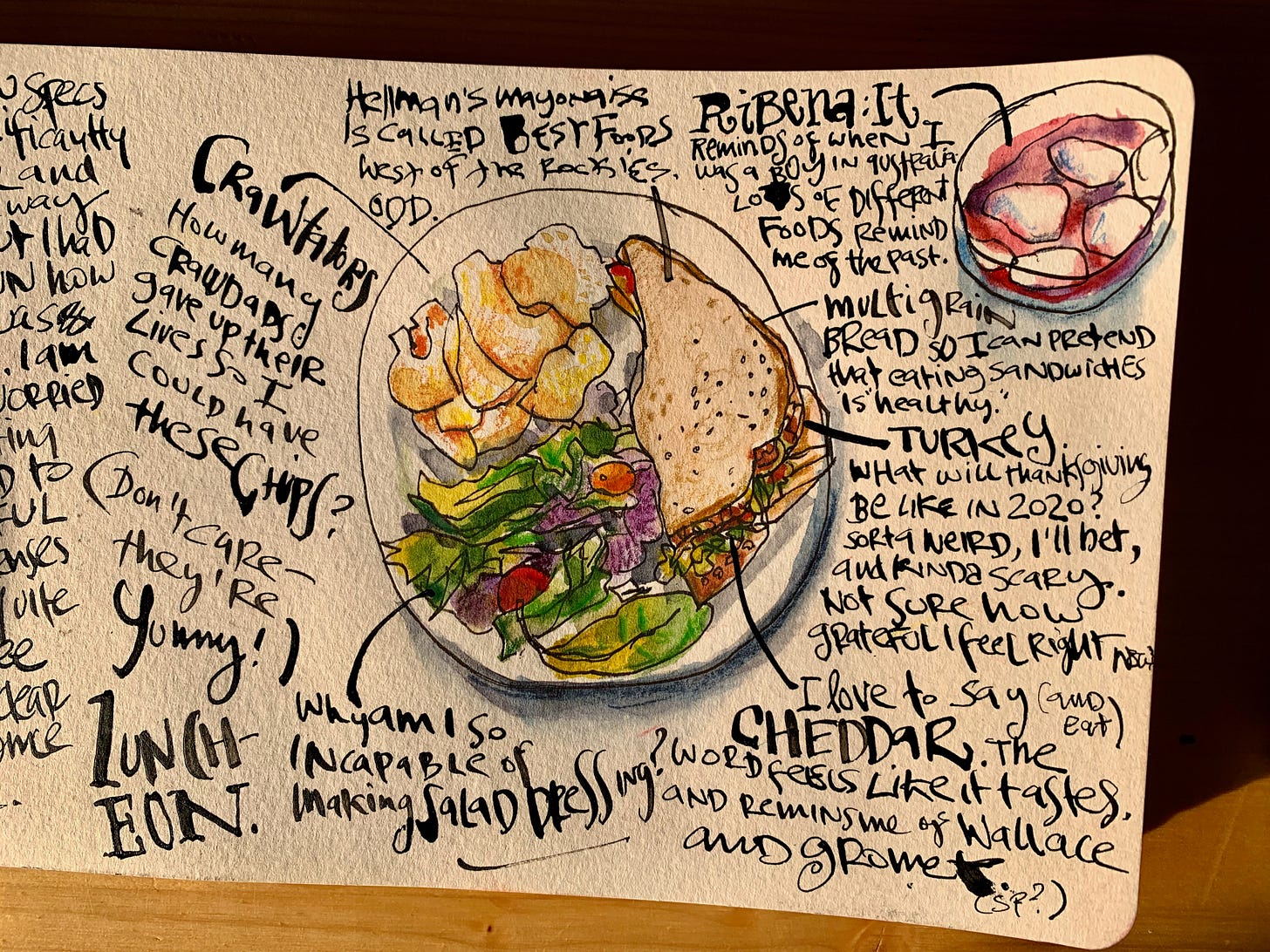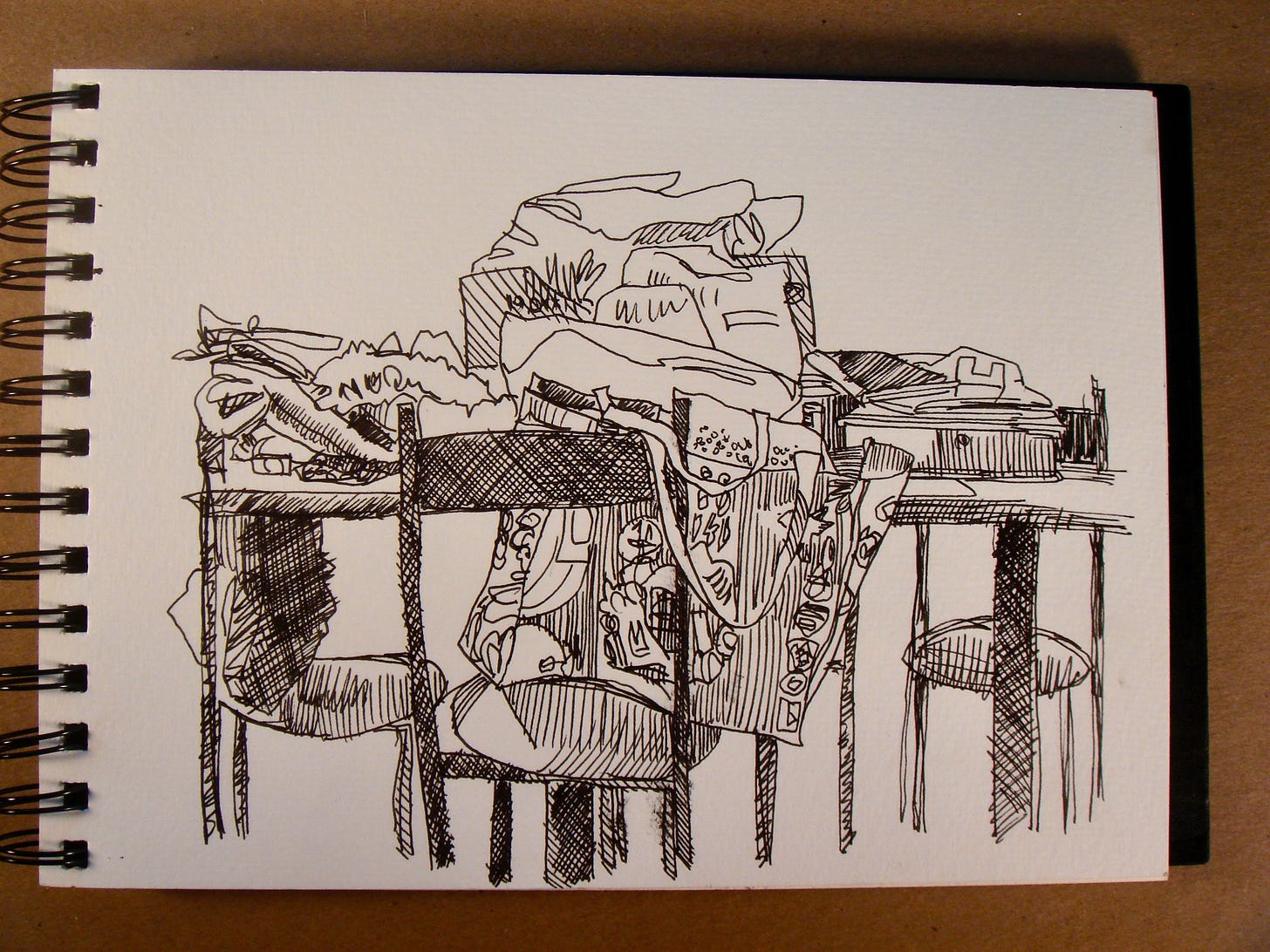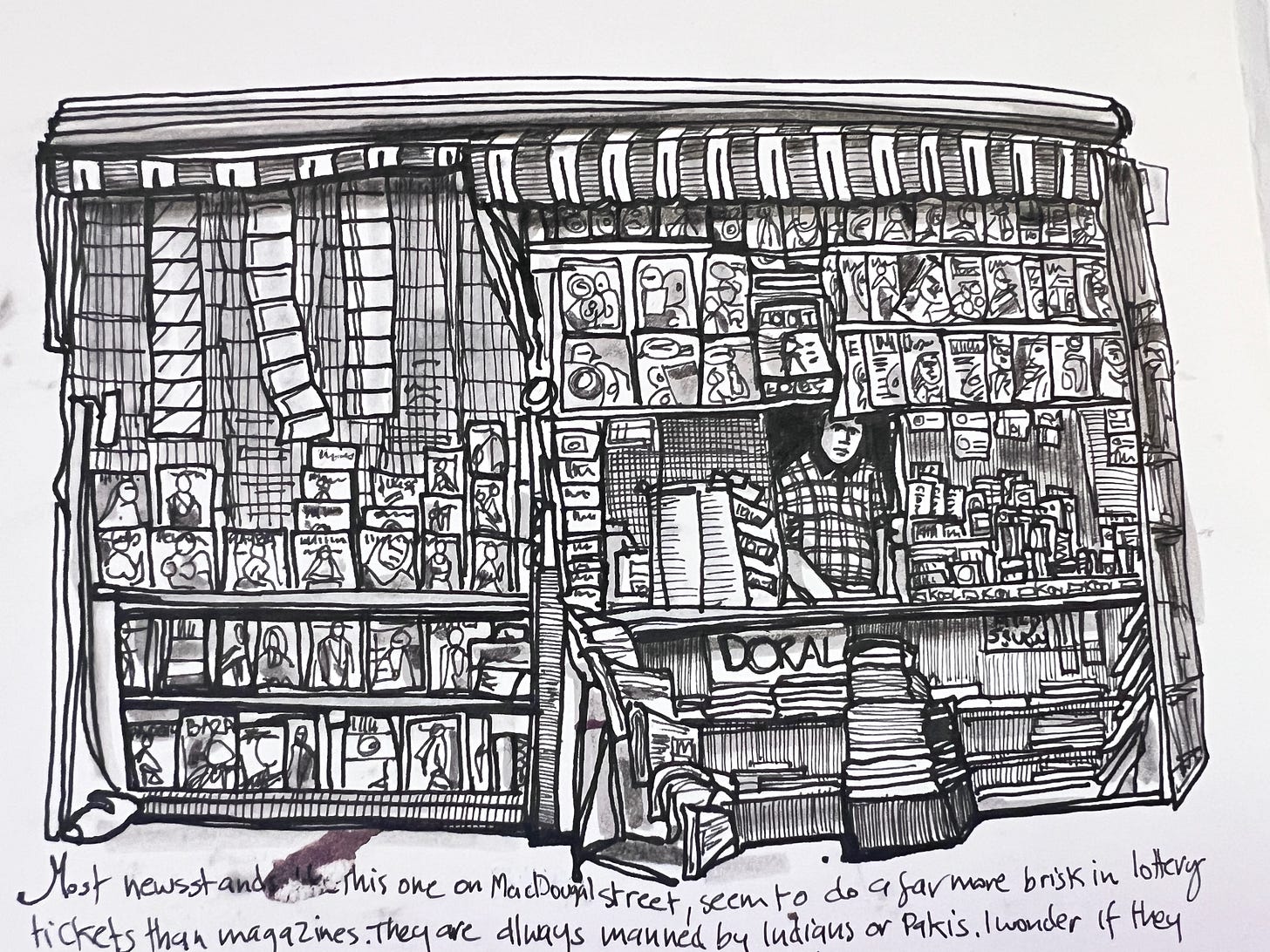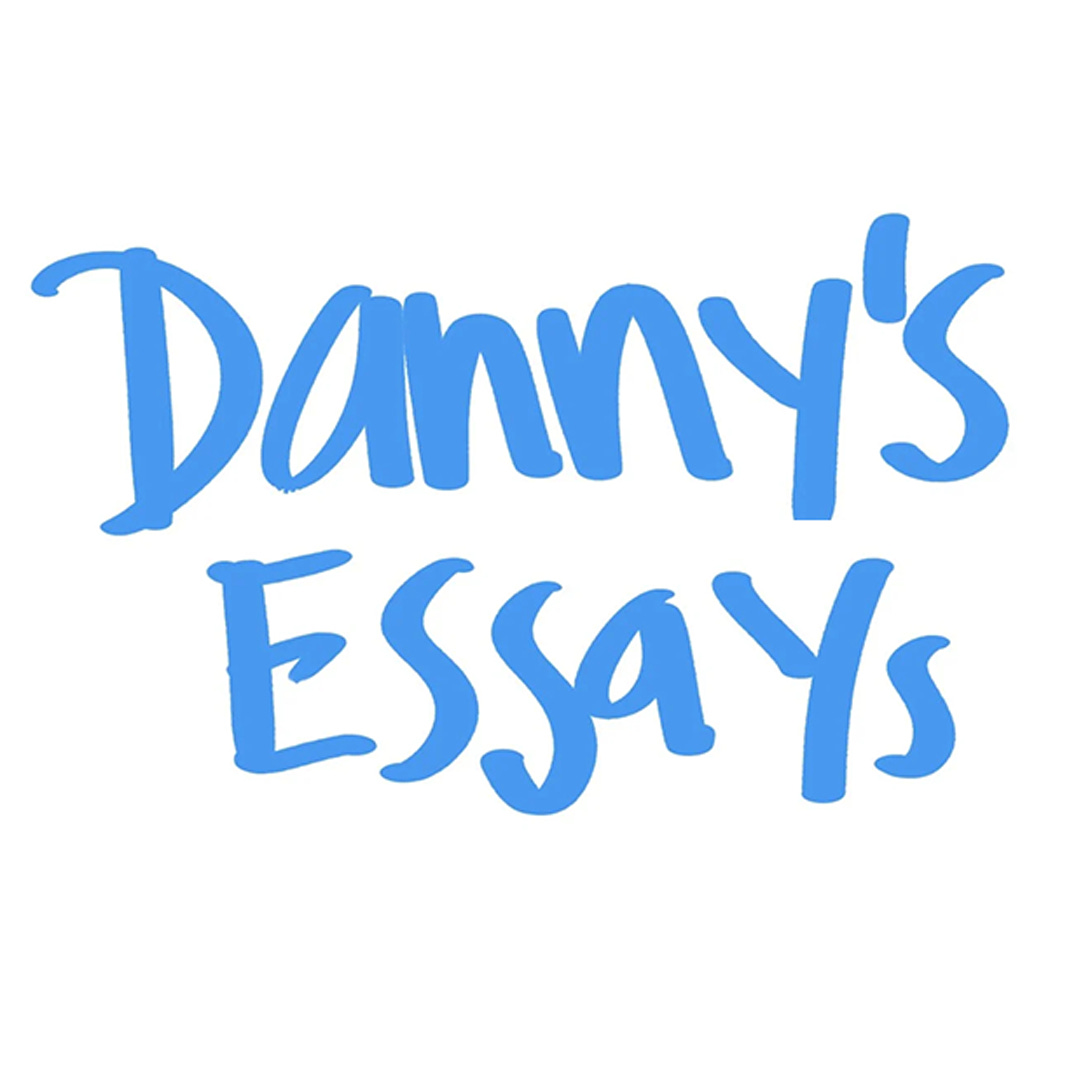I Love a Man in a Uniform.
The power of choosing not to choose.
I was sad when David Lynch died this January. We used to listen to his quirky weather report every day on KCRW, and there was something so down-to-earth and reassuring about him. I felt the loss right away.
I liked Lynch’s duality. His imagination was so very strange, but he was also extremely ordinary in his demeanor. He just seemed like a regular ol’ guy from the Midwest — an alfalfa farmer, or the manager of a dry goods store.
I’ll be honest, a lot of Lynch’s movies were too surreal and strange for me. But the thing I like most about him, besides, perhaps, Blue Velvet, was how he talked about creativity, especially in his wonderful book, “Catching the Big Fish.“ I learned a lot from that book about how to quieten the world and let my mind run wild.
Lynch was a great believer in structure and consistency. At 2:30 each day, he would sit in the same booth at Bob’s Big Boy and order a chocolate milkshake. He also ate the same lunch every day. I think it was tuna fish and tomato salad. In that regular booth, he sat quietly by himself and wrote uniquely strange movies and books and tv shows. Hour after hour, undisturbed — except for the waitress refilling his coffee cup.
I’m also a big believer in patterns and habits and structure. If I think about all of the many, many decisions we’re all called upon to make every day, it can be completely overwhelming. Whether it’s what to wear or what we should have for dinner, there are just hundreds of small decisions demanding our attention.
I’m sure for Lynch, being a director, there were countless creative decisions to make, from the script to the cast to every detail of the production. And so, where he could, he minimized the choices in his life. No wonder he always seemed to wear the same white shirt, buttoned all the way to the top.
A lot of creative people decide to wear uniforms. I think of Steve Jobs and his black turtleneck and his blue jeans. Albert Einstein supposedly had multiple copies of the same exact gray suit that he would wear every day.
Fashion designers — whose job it is to come out with new and different clothes each season — often wear the exact same thing all the time. Ralph Lauren in his chambray shirt and blue jeans, or Michael Kors in his black suit and aviators, Jean-Paul Gaultier in stripes, or Anna Wintour with the same bob and big sunglasses.
To save the creative energy they need to design clothes for others, they decide not to spend much time thinking about their own.
When Maya Angelou was writing “I Know Why the Caged Bird Sings,” she would rent a nearby hotel room by the month, sit on the bed, and write. Next to her, a Bible, a dictionary, a legal pad, some pens, a bottle of sherry, and a pack of cards to play solitaire when she was blocked. She even asked the hotel to take all the pictures off the walls so that nothing would distract her.
Long before there were Starbucks and baristas, Beethoven was famous for starting each day by counting out exactly 60 coffee beans by hand, grinding them, and brewing a cup of strong black coffee. It was a part of his daily creative rhythm, and he said he couldn’t start composing until he had that perfect cup in his hand.
In his indispensable book On Writing: A Memoir of the Craft, Stephen King talks a lot about his habits and routines and the importance of treating writing as a regular job, instead of waiting for some thunderbolt to inspire him. His goal is to produce 2,000 words a day, even on holidays and birthdays.
He starts every morning between 8 and 8:30, and he writes for three to four hours. And he always sits at the same desk with the door closed. The papers, the setup, everything has to be the same. He likens his morning to “getting ready to dream with your eyes open.” I love that.
I’m writing most of this essay on Monday. On Tuesday, I’ll tweak and polish it. I walk away from it until Thursday afternoon, when I do a final read-through and then set it up on Substack so that it can be sent out to you at 2:34 a.m. on Friday.
It’s easier not to waste energy wondering why or when—my whole week is mapped.
On Monday, I have to have an idea to write about — no matter what. On Tuesday, I’m going to release another video. On Wednesday, I will do a drawing with the members of our YouTube channel. On Thursday, JJ and I are going to host Draw with Me. Twice a year, I’ll make a new course, and every other year, I’ll publish a book.
I’m not always sure what I’ll wear or eat tomorrow, but I’m still pretty stuck on what my grandfather called “the prograhm.”
Now you might just think that I’m anal-compulsive or that I have OCD—both may be true. But the reality is that I find that having a schedule to follow gives me a huge amount of freedom.
Too many choices wear down your willpower. It’s called ‘decision fatigue’ and it gives your inner critic an open mic. Permission to procrastinate.
By simplifying your routine, you preserve your cognitive resources and save your mental energy for creative tasks. You have more bandwidth for art and problem-solving.
The reason creative people have assistants and managers is so that they can focus on making the decisions that only they can make. Let someone else pick the hotel or order the sandwich. The artist decides what to create.
And I’m not just talking about geniuses and celebrities.
The fact is, we can all reduce the number of decisions we have to make. For instance, I’m sure there are better pens out there that I could be using. But I’ve decided that the ones I have at hand, right now, will do just fine. I’m sure there are better watercolors and better sketchbooks I could shop for. I’m sure there are other topics I could make art about. Better prompts we could do on Draw with Me. Other things I could write essays about.
Eventually, I say: enough. I’ve made my choice. And if it’s wrong? So be it.
That isn’t to say that I never revisit those decisions. A couple of times a year, I might say, “Let me just check out all my pens and see if there’s something I want to change or improve.” It’s an option.
But until that point, I’m good with what I have. I’m good with this essay. I’m good with my Bob’s Big Boy milkshake. And with the view from my booth.
Your pal,
Danny
P.S. In case you were wondering why I have such dirty fingernails, it‘s Inktober™. I have been drawing the official prompts every day and streaming the (sometimes painful and humiliating process) live on YouTube. I’ve also been posting my drawings on Substack in the Notes section.
P.P.S. I know that downloading apps (and getting yet another login and a password to forget) is a pain, but I have found so many interesting things on Substack that I urge you to try it anyway. Having a (free) account also lets you leave me comments, which I enjoy and my ego craves. And soon we’ll be launching Chats, which will be awfully exciting. But, y’know, if you'd rather not bother and just keep things as they’ve always been, I get that too. I still love you.






You’re a breath of fresh air. I feel uplifted and inspired when I read your essays. You are my virtual
Friend . Thank you
Your essay reminds me of the book, Daily Rituals: How Artists Work by Mason Currey. He writes about the the daily routines of over 150 creative people—writers, painters, and music. I’ve tried to figure out the secret but it seems that everyone has something different to practice their craft. Love reading about this stuff— thanks for sharing your rituals.